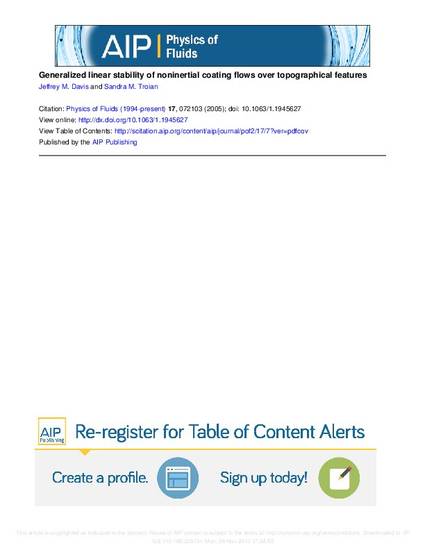
The transient evolution of perturbations to steady lubrication flow over a topographically patterned surface is investigated via a nonmodal linear stability analysis of the non-normal disturbance operator. In contrast to the capillary ridges that form near moving contact lines, the stationary capillary ridges near trenches or elevations have only stable eigenvalues. Minimal transient amplification of perturbations occurs, regardless of the magnitude or steepness of the topographical features. The absence of transient amplification and the stability of the ridge are explained on physical grounds. By comparison to unstable ridge formation on smooth, flat, and homogeneous surfaces, the lack of closed, recirculating streamlines beneath the capillary ridge is linked to the linear stability.
Available at: http://works.bepress.com/jeffrey_davis/11/

DOI: 10.1063/1.1945627
The publisher version is located at http://scitation.aip.org/content/aip/journal/pof2/17/7/10.1063/1.1945627